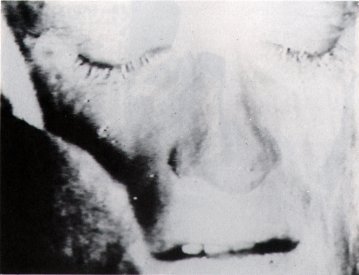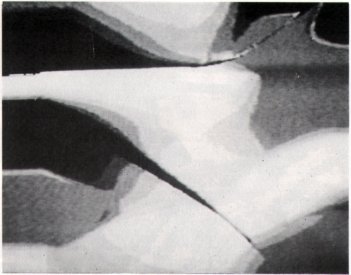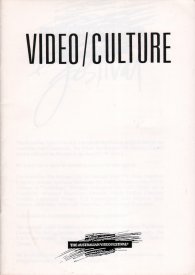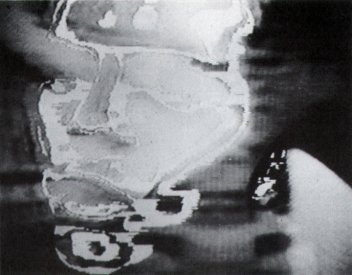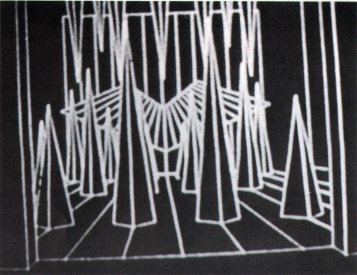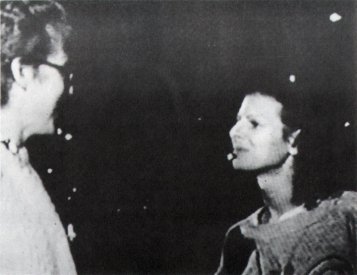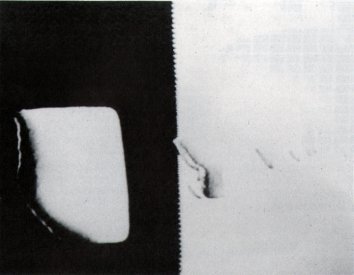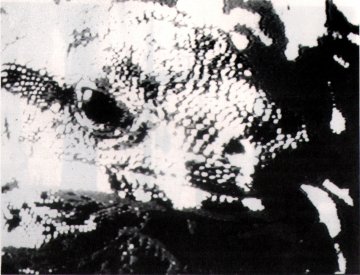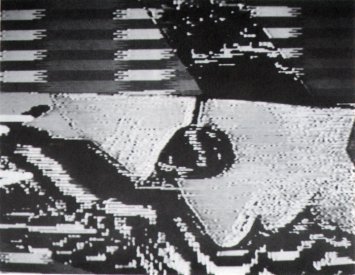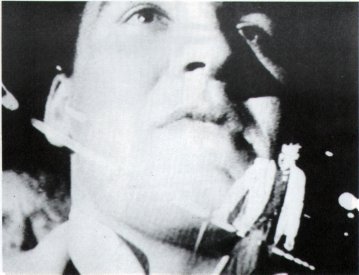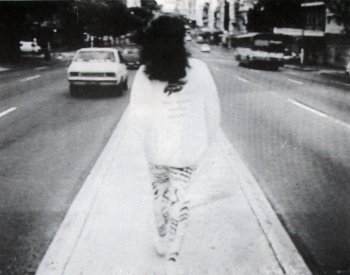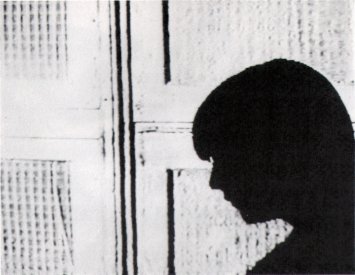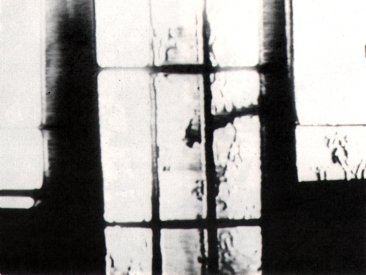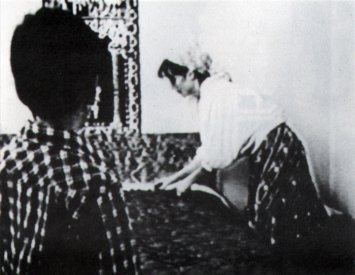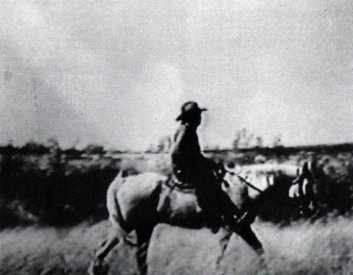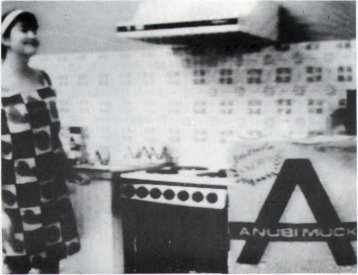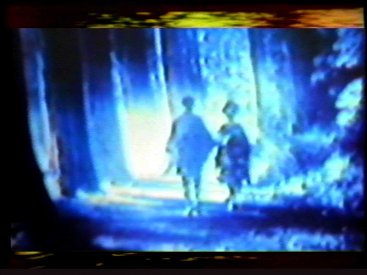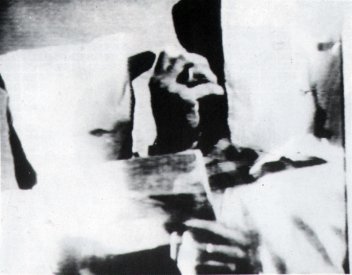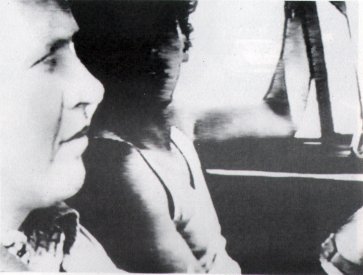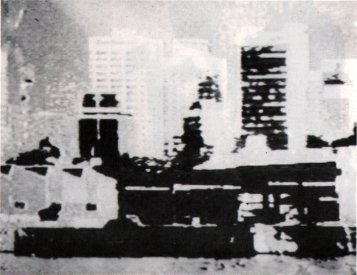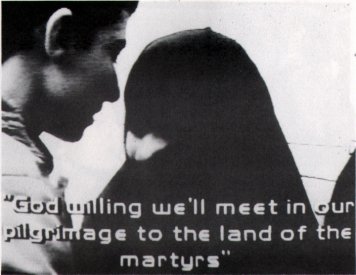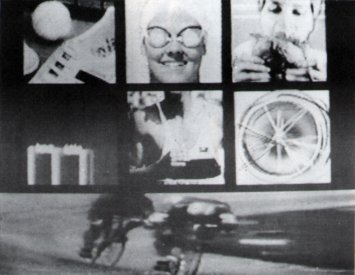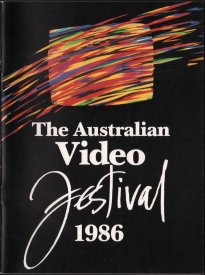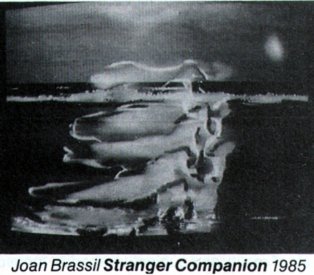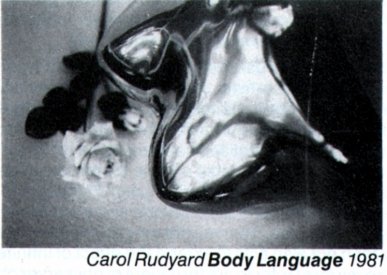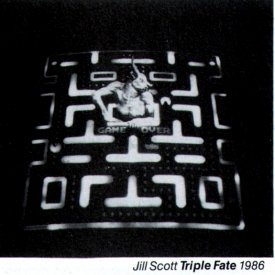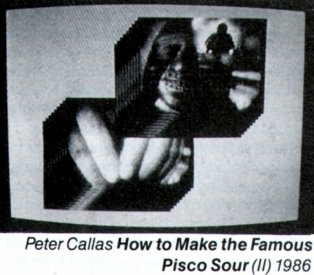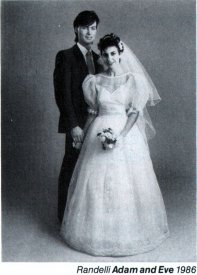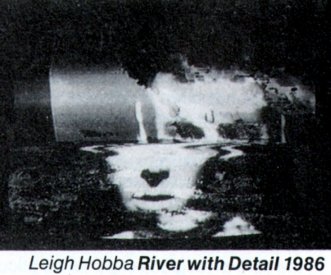Although Sydney had had a film festival since the 1950s, video came out of an entirely different trajectory — one of activism and experimental art that did not attract the art-film audience. Also, filmmakers largely rejected video as it was considered to be of far too low a resolution and it was too hard to make a well constructed and edited work using the existing technology (this applied even to broadcast TV up until the mid 1960s). Nevertheless, in Australia video began as an experimental form in the late 1960s, but it had its roots in experimental and expanded cinema as well as new music and performance art.
The first attempt to establish a video festival in Sydney was in 1978. Although it was not successful, a travelling exhibition of Australian video titled Videotapes from Australia grew out of it. However, there was a gap of some years before another video festival could be developed. Metro TV (now Metro Screen) had to establish itself out of the ruins of the Paddington Video Access Centre, and a new group of artists emerged. Joan Brassil, Jill Scott, Peter Callas, John Gillies and others were making and showing work, and some of them were also teaching. In Paddington, Sydney, Roslyn Oxley9 Gallery had begun exhibiting video in a more or less dedicated space that could be used for installation or single channel work equally easily. Meanwhile, the two main art schools in Sydney, City Art Institute (CAI, now COFA, College of Fine Arts) and Sydney College of the Arts, began teaching video. In this context, in 1985, the Australian Centre for Photography (ACP) held the successful Scanlight: New Developments in Video Art (19 June – 14 July), which had been organised by Wendy Spencer and Claudine McMundi.
With this background, the 1986 Australian Video Festival was initiated through discussions among Jill Scott, Annmarie Chandler (of NSWIT, NSW Institute of Technology, now UTS, University of Technology, Sydney), Greg Hoy and others. A committee was set up with Scott as President, Sally Couacaud as co-ordinator, Linda Wallace as secretary, Kathy Coutoupes as Treasurer plus support from Martin Jolly (ACP), Felicity Coonan (VPB), Tony Bond (AGNSW, Art Gallery of New South Wales), and Owen Trembath (Not TV), with Brad Buckley and Brian Langer among the curators. Supporting institutions included CAI, NSWIT, Metro TV, with exhibitions support from the Australian Centre for Photography (ACP), AGNSW, the Australian Film Institute (AFI)’s Chauvel Cinema, First Draft, Artspace, Performance Space, and the CAI. Sponsorship came from production houses Video Paintbrush Company (VPB), Audience Motivation, and VideoLab, equipment suppliers Fairlight Instruments, Eurovision, the major videotape makers Ampex, Sony and GEC (National Panasonic), and smaller operations like Heuristic Video.
The Festival took up office space in the Paddington Town Hall, which also housed Metro TV, the AFI and the Chauvel Cinema, and meetings to organise the event began in November 1985. Robert Randall and Frank Bendinelli took on the task of organising the Melbourne contributions. The CAI saw it as part of their responsibility to make a strong push to support student video makers and provided forums, exhibition space, some financial support and generally encouraged their students to be involved.
The lynch-pin of the festival was Jill Scott, who had recently returned to Australia after having lived in the USA, establishing herself there first as a performance artist and then as a video artist. She taught new techniques at NSWIT for Chandler who was teaching video production. Scott organised the sponsorship; Felicity Coonan (who was undertaking an MA at CAI) organised the video graphics for the festival.
The festival attracted over 300 entries in a national competition for video in six categories:
Video Art
Graphics (mostly computer generated)
Music Video
Narrative/Drama,
Documentary/Informational.
The program consisted of screenings, exhibitions and special programs such as Aboriginal Video, a workshop on new technology led by Ko Nakajima, a talk by American curator John Hanhardt, and a Severed Heads concert. Numerous venues presented aspects of the program:
Art Gallery of NSW
- video installation
- history of Australian video exhibition
- experimental video artwork competition
Artspace
- New York City video exhibition
Australian Centre for Photography
- video graphics exhibition
- video graphic work competition
Chauvel Cinema
- showcase screenings (Video Expos) of selected competition entries
- screenings of international video works
- presentations, special programs and concerts, including Severed Heads
City Art Institute
- student video work competition
- forums, workshops
First Draft
- video/European exhibition
Metro Television
- music video competition
- forums on new technology and distribution
New South Wales Institute of Technology
- narrative/drama competition
- documentary/informational competition
- forums, workshops
Performance Space
- Time and the Timeless, Japanese video art
An indigenous selection, shown as one of the series of Video Expos at the Chauvel, was organised by Ken Canning, a student (at Tranby College and NSWIT) and artist, with support from Tracey Moffatt, Gary Foley and Lester Bostock.1 There is currently no available listing of this.
Exhibitions
As well as exhibitions featuring earlier Australian video works and installation, there were also exhibitions of collections from Europe, New York and Japan.
Video Installation in Australia
curated by Anthony Bond, at the Art Gallery of NSW
Video and installation are both temporal forms and, thus, “restructure the relationship between the viewer, the artist and the art work.”2 The viewer must become an active participant in the realisation of the work, and thereby the viewer’s role as consumer is broken down a little. These installations indicate the diversity of video work in the mid 1980s, each artist examining the construction of meaning through the spatial extension of the video screen into the gallery, which here offers one or another metaphor for the social languages and their normalisation through television. The works were:
Stranger Companion by Joan Brassil, which examines the effect on the stranger of their perceptual entry to a new land by alienating the direct view of the screen, requiring us to see its effects through, here, distorted perspex mirrors that form a metaphor for the distorted view of the new world we bring with us as the stranger.
How to Make the Famous Pisco Sour, by Peter Callas, in which he uses parallel symbolic systems: visual, written and spoken that counterpoint the “process of association between images and text [forming] a pattern of tangential connections which transform gradually into improbabilities ... suggesting alternative ways of interpreting the imagery.”3
Adam & Eve, by Randelli (Robert Randall and Frank Bendinelli), examines “media representations of man, woman and sexuality” and the legitimising ritual of the etiquette of dress, the display and the ceremony.4
Body Language, by Carol Rudyard, builds a slow dance of images drawing on notions of female sexuality versus romance in the “interchangeability of the religious/erotic experience [and] the commercial world of the advertising industry.”5
Triple Fate, by Jill Scott, is a science fiction game in which the myths and stereotypes are jumbled as a woman is pursued by a Minotaur, or a detective and a future “where strange things just happen.”6
River with Detail, by Leigh Hobba, uses multiple monitors to “to provide temporal dislocations and parallel narratives.”7
Video Graphics
curated by Felicity Coonan, at Australian Centre for Photography,
with introduction by Martin Jolly and a reflective essay by Simon Penny.
The exhibition predicted the rapidly developing importance of computer generated imagery in the commercial and industrial realm as well as within video art. Video art has long depended on new technologies originally developed for other purposes, and as Martin Jolly points out: “It can either humbly accept the new technology as a neutral given, and integrate it into its own formation as a discrete art practice, or it can aggressively seize the new technology and use it to interrogate the very cultural and economic formations which produced it.”8 The exhibition (probably) consisted of works by
Warren Burt: Meditations 1–4–8
Peter Fox with Stephen Jones: Untitled (Video synthesis)
SBS TV: Sport title, 1985; Sport Report title, 1986; Images, 1985; Budget 1985; News Graphics, 1986; Midweek opener, 1985; Beatclub, 1986.
TCN Channel 9:
- Sports Graphics: Sports Sunday opening titles by Anna Namuren; State of Origin Opening title by Cathy Linsley; America’s Cup Greatest Moments by Cathy Linsley; Italian Open Tennis Playoff by Jackie Rothwell.
- News Graphics: Mark Twain by Jackie Rothwell; Anzac Day by Jackie Rothwell; New York Ghettoblasters by Karen Wilcox; Brixton Riots by Karen Wilcox; Animal Rights by Julie Lafferty; Duck Shooting Season in Victoria by Cathy Linsley; Acrobat Missing by Anna Namuren; AIDS by Anna Namuren; US Open by Margaret Kelly; US … Tourists in Australia by Margaret Kelly.
- Personal Graphics: Untitled by Tina Hamilton; Chitty Chitty Bang Bang by Julie Lafferty; Shakespeare by Anna Namuuren; Room with a View by Anna Namuren.
Workshops
Workshops included Ko Nakajima’s presentation of his Aniputer video-computer, and a lecture by John Hanhardt on the history of video art in America.
Nakajima also joined in the New Technology forum with Jean-Marc Le Pechoux of Video Paint Brush Company (one of the main sponsors of the festival).
A workshop at City Art Institute introduced new graphics and production technologies. It included presentations on the Commodore Amiga from a representative of Neriki Aust. Ltd., John Hansen introduced Vision Control’s Conjure graphics system and Fairlight Instruments introduced their Fairlight CVI. There were also sessions on Video 8 from Canon and new Audio production and Lighting systems.
Competition results
Video Graphics
- Warren Burt: Meditations 1–4 (non-commercial prize)
- Anna Namuren: Sports Sunday (commercial prize)
- Sally Pryor: Dream House (Award of Merit)
- Anna Namuren: Room with a View (Award of Merit)
- Richard Guthrie: Dog and Lizard Legend (Award of Merit)
Documentary/Information
- Margo Nash: Speaking Out (best documentary)
- Bob Plasto: Paradise of Martyrs (2nd prize)
- Chris Nash: Brigadistas (Award of Merit)
- Musical Films: Radio Po Movie Pt 3 (Award of Merit)
- Rowan Woods: Reaction Football (Award of Merit)
- Kamira Kamera Club: Kamira (Award of Merit)
Video Art
- Wayne Tindall: Cling to Dreamtime (Award)
- Debra Beattie: Expo Schmexpo (Award)
- Martin Munz: Satellite Systems (Award)
- Cathy Vogan: Dear Me (Award)
- John Gillies: I Need You (Award of Merit)
- Sue Richter: Blood on the Saddle (Award of Merit)
- Linda Wallace: 4 Girls (Award of Merit)
Music Video
- Meaningful Eye Contact: Flicker (Foetus Productions) (1st prize)
- Julian Morgan: Itchen in the Kitchen (2nd prize)
- Phil Judd: Dreaming Away (Award of Merit)
- Severed Heads: Petrol 1 (Award of Merit)
Narrative/Drama
- George Evatt: Steve’s Falcon
- David Perry: Love and Work
- EVTV: Seven Sisters Dreaming (Award of Merit)
Award Jurors
Documentary/Informational: Tom Zubryki, Jenni Thornley, David Perry.
Drama/Narrative: Gillian Leahy, Tina Kaufman, Ross Gibson
Video Art: Joan Brassil, Tony Bond, Jill Scott, Stephen Jones
Music Video: Suzanne Dowling, Annette Shun Wah, Nick Power
Video Graphics: Felicity Coonan, Martin Jolly, Denise Robinson, Allan Hondow
Student Video: John Gillies, Wendy Spencer, Linda Booth, James Bogle
Couacaud summed up her report on the AVF by saying that:
Gaining access to expensive technology from which to construct visual languages of the future, developing theoretical frameworks in which to locate content, and battling to expand arenas for exhibition and distribution, are some of the issues opened up by the first AVF, and to be carried on in future festivals.
In this, the role of industry, funding bodies and broadcast television is crucial. All stand to benefit from a vigorous and expanded video scene (it is as well to note the move of many filmmakers to video, not just because of economic dictates but because of the increasingly exciting possibilities of the video medium), and it is to their advantage to energetically take up these responsibilities and opportunities.9
References
Australian Video Festival 1986, ed. Sally Couacaud, Australian Video Festival Ltd., Sydney, catalogue to the exhibition.
The Australian Video Festival Report 1986, ed. Sally Couacaud, Australian Video Festival Committee, Sydney, 1986.
“Chronology of the Australian International Video Festival 1986–1992”, Brian Langer, in Continuum: Journal of Media & Cultural Studies, 1469–3666, Vol. 8, Issue 1, 1994, pp. 267–279.
SHOWCASE SCREENINGS SCHEDULE
|
Friday, August 1st |
|
|
8.30pm |
What Is This Thing Called Video? — A sampler, a video showbag |
|
11.00pm Lateshow |
Tsk, Tsk, Tsk Presents — Highlights from the notorious Melbourne music/video collective |
|
Saturday, August 2nd |
|
|
2pm–6pm |
Video Expo — installations, screening booths, displays, etc. |
|
8.00pm |
Best of Music Video competition |
|
10.30pm |
A History of Oz Music Video, plus International Music Video Selection (by invitation) |
|
Sunday, August 3rd |
|
|
2pm–6pm |
Video Expo |
|
3.30pm |
Forum: New Technology |
|
7.30pm |
New Japanese Video: A selection |
|
Tuesday, August 5th |
|
|
6.00pm and 8.00pm |
American Video Art 1967–80, introduced by John Hanhardt Pt. I and Pt. II |
|
Wednesday, August 6th |
|
|
6pm–8pm |
Best of Video Documentary Competition entries. |
|
Friday, August 8th |
|
|
8.00pm |
American Video Art 1967–80 Pt. III |
|
10.30pm |
Live music/video performance: Severed Heads |
|
Saturday, August 9th |
|
|
2pm–6pm |
Video Expo: Aboriginal Video |
|
8.00pm |
Best of Video Art and Video Graphics, plus History of Australian Video Art |
|
10.30pm |
Live music/video performance: Severed Heads |
|
Sunday, August 10th |
|
|
2pm–6pm |
Video Expo |
|
3.30pm |
Forum with video makers |
|
7.30pm |
Best of Drama/Narrative entries |
|
Tuesday, August 12th |
|
|
6.00pm |
Euro-Video Selection I |
|
8.00pm |
Euro-Video II |
|
Wednesday, August 13th |
|
|
6.00pm |
New York City Video I |
|
8.00pm |
New York City Video II |
|
Friday, August 15th |
|
|
8.00pm |
Same As It Ever Was: world premiere of Australia’s first ‘video feature’ |
|
10.00pm |
Oz Music Video Program, plus International Music Video selection (repeat) |
|
Saturday, August 16th |
|
|
9am–5pm |
Student Forum Day |
|
2pm–6pm |
Video Expo (Student Installations) |
|
8.00pm |
Best of Student Video competition entries |
|
Sunday, August 17th |
|
|
2pm–6pm |
Video Expo |
|
3.30pm |
Forum: Video Distribution |
|
7.30pm |
Winners Presentation and Screenings |
1The names here are all according to Annmarie Chandler, from a conversation with the compiler.
2“Video Installation in Australia”, Anthony Bond, Australian Video Festival 1986, Australian Video Festival Ltd, Sydney, p. 9, catalogue to the exhibition.
3Peter Callas, artist’s statement in “Video Installation in Australia”, Australian Video Festival 1986, Australian Video Festival Ltd, Sydney, p. 12.
4Randelli, artist’s statement in “Video Installation in Australia”, Australian Video Festival 1986, Australian Video Festival Ltd, Sydney, p. 13.
5Carol Rudyard, artist’s statement in “Video Installation in Australia”, Australian Video Festival 1986, Australian Video Festival Ltd, Sydney, p. 14.
6Jill Scott, artist’s statement in “Video Installation in Australia”, Australian Video Festival 1986, Australian Video Festival Ltd, Sydney, p. 15.
7“Video Installation in Australia”, Anthony Bond, Australian Video Festival 1986, Australian Video Festival Ltd, Sydney, p. 9, catalogue to the exhibition.
8“Video Graphics”, introductory note by Martin Jolly, Australian Video Festival 1986, Australian Video Festival Ltd, Sydney, p. 55.
9The Australian Video Festival Report 1986, Sally Couacaud, Australian Video Festival Committee, Australian Video Festival Ltd, Sydney.
